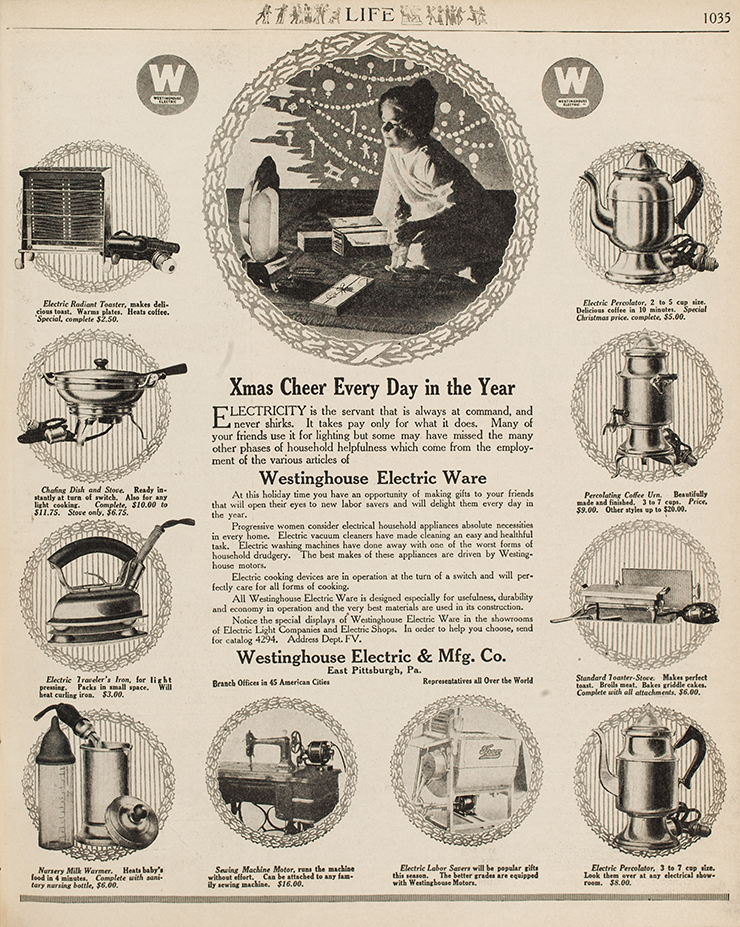Background
By the early twentieth century, electricity was a regular part of middle-class home life. Tools for cooking, cleaning, laundry, and sewing were available at relatively affordable prices in department stores and through catalogs. Households replaced servants with appliances. This transition had a negative impact on both domestic servants and housewives. As the demand for domestic servants decreased, unemployment increased. Housewives who previously enjoyed leisure time now spent most of their time operating appliances that completed the work once done by a servant. As a result, electrical appliances meant many women spent more time taking care of their homes, not less.
About the Document
This advertisement appeared in the national magazine Life. The images around the border highlight the different types of appliances available. The text in the center focuses on the relationship between these items and the women who used them.
Vocabulary
- chafing dish: A serving dish that keeps food warm.
- domestic servants: Paid employees who work in the home and do housework, including cooking, cleaning, and taking care of children.
- drudgery: Boring and tiring work.
- percolator: An appliance that brews coffee.
Discussion Questions
- What appliances are advertised and what do they do? How would these items change life in the home?
- This ad suggests buying household appliances for women as Christmas gifts. What does this imply about the role of women and what they did with their time? How do you think women felt about receiving such gifts?
- The ad describes electricity as “the servant that is always at command.” What does that mean? How might these new inventions have changed the role of maids and other domestic workers?
Suggested Activities
- Invite students to think about what housework looked and felt like across different households. Connect this advertisement to the course descriptions from the Agricultural College of Utah and the life story of Ellen Swallow Richards.
- Use this advertisement in conjunction with the article by Fannie Barrier Williams in the Chicago Defender to consider the experience of paid domestic workers in this era.
- Use this advertisement to learn about turn-of-the-century technology. Compare the appliances depicted to modern equivalents.
Themes
DOMESTICITY AND FAMILY; SCIENCE, TECHNOLOGY, AND MEDICINE; WORK, LABOR, AND ECONOMY







